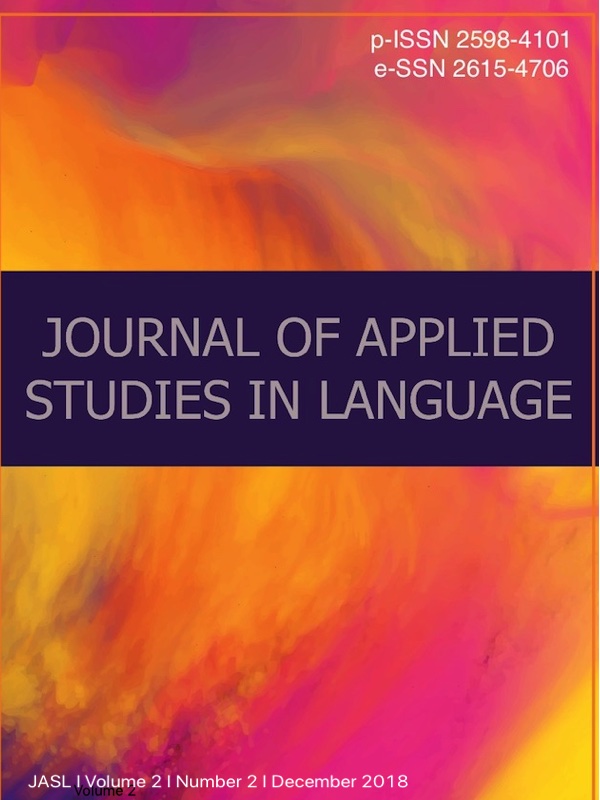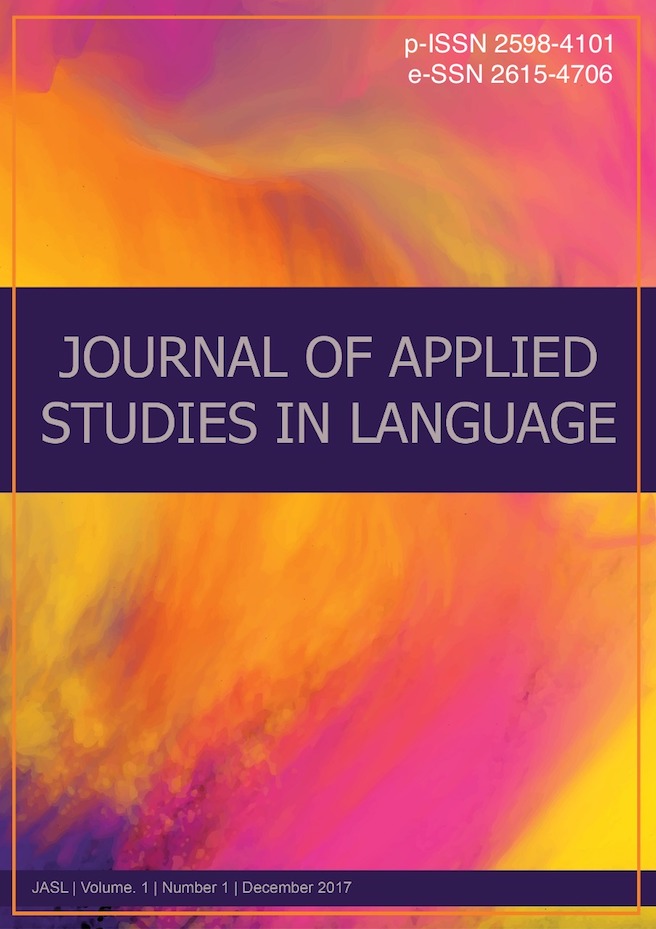Derivational affixes in Japanese and Indonesian
the study of linguistics typology
Abstract
Japanese and Indonesian seen from morphological typology is an agglutinative language in which the morphological processes are done by affixation, ie by adding prefixes, suffixes and infixes. While the basic sequence sentence structure has a SOV sequence pattern for Japanese and SVO for Indonesian language. The predicate filled by the verb is capable of binding arguments in constructing the clause structure, so that there are verbs with one, two and three arguments, it depends on the type of verb. This study is a preliminary study of Japanese and Indonesian derivative verbs: the study of linguistic typology. The Theory of Linguistic Typology is used to analyze the formation of Japanese and Indonesian derivative verbs in which the verb serves as the core of the predicate to bind the argument in constructing the clause structure. From the perspective of linguistic typology, the results of the analysis show that (1) the basic form of Japanese derivative verb formers are adjectives (keiyoushi) and noun verbs, whereas Indonesian derivative verbs are derived from adjectives, nouns and pre-categorical. (2) The Japanese derivation affixes joining the adjective (keiyoushi) are -める meru, -まるmaru, -がるgaru’, -むmu and which joins the noun verb is -するsuru. While the derivational affix of the Indonesian language that joined the nouns are meng-, ber-, ter-, ke-an, ber-an, ber-kan, per-, -i, per-i, per-kan, the affix that joins the adjective are meng-, ber-, ter-, ke-an, ber-an, ber-kan, per-, -kan, per-i, dan –i and the affixes that join the pre-categorical are meng-, ter-, ber-, ber-an, -i,-kan.











